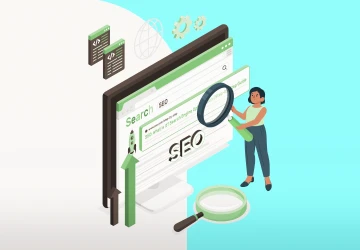The 49 Best School Website Blogs Ideas

School website blogs aren’t just about announcements—they can be a space where a simple story sparks real education engagement.
Picture this: A student reads a blog about a classroom garden and starts planting at home.
That’s the kind of impact powerful blog topics can have.
In this guide, I’ll walk you step by step through how to create effective school website blogs that don’t just inform but also inspire.
From choosing the right blog topics to writing in a way that boosts education engagement, you’ll learn how to turn your school blog into a go-to hub for students, parents, and teachers alike.
What Are the Top Education Blog Post Ideas?
1. Expert Q&A With Education Pros
As a graduate, one of the best and most effective school website blogs for boosting education engagement is a simple idea: an Expert Q&A series.
It’s a blog topic that never gets old.
You just interview people from careers students care about—like artists, engineers, scientists, or even past students who’ve done cool things.
These posts give real-life advice and help students see how what they’re learning in class connects to their future.
And if you keep it going as a regular series, it gives people a reason to keep coming back to your blog.
2. New Educator Classroom Tips
Many of us remember how overwhelming those first days of teaching can feel.
That’s why school website blogs with helpful advice for new teachers are great for boosting education engagement.
A simple blog topic like this can go a long way—just share easy tips in bullet points or tell quick stories from experienced teachers.
Such as how they handled a noisy class, dealt with a tough question, or helped a shy student feel more confident.
These real examples make the advice feel more relatable and useful.
And the best part?
New teachers will keep coming back whenever they need a little guidance.
3. Social Media’s Role in Classrooms
Let’s face it—social media is already a big part of students’ lives, so why not make it part of your school website blogs?
This is a powerful blog topic for sparking education engagement, especially when you let teachers share their thoughts on how social platforms affect the classroom.
You can even get students involved by encouraging them to weigh in or contribute their own experiences.
It’s a great way to open up honest conversations, explore both the pros and cons, and show how digital tools can be used in a smart, balanced way.
Plus, the back-and-forth between teachers and students makes the blog feel more like a community, not just a one-way post.
4. Interactive Sociology Lessons
No one can deny how powerful real-life conversations are in the classroom—and that’s why school website blogs with interactive sociology lessons are a great way to boost engagement.
This kind of blog topic gives students a chance to think about real situations they see in the world and talk about how they feel or what they’d do.
Teachers can post a question, a scenario, or even a current event, and students can respond in the comments or during class.
It’s not about memorizing facts—it's about thinking things through, having honest discussions, and seeing how school lessons apply to real life.
5. Top Online Tools for Teachers
Teachers are always looking for new ways to make their jobs easier and help their students do better.
That’s why a school website blog that lists the best online tools for teachers is such a smart idea to boost education engagement.
It’s a great way to help teachers find fresh resources to improve their lessons, and it also gives parents tools they can use to help their kids learn at home.
6. How to Write a Book Review
Writing a book review can feel tough when you’ve never done it before.
That’s why a school website blog on how to write a book review is such a handy blog topic for education engagement.
Think of it as a step-by-step outline: start with a quick plot summary, then talk about what you liked (or didn’t), and wrap up with your overall thoughts.
Teachers can even share a fill-in-the-blank template to guide students.
Breaking it down like this makes writing a review less scary and gives students the confidence to share their opinions.
7. Mental Health Strategies for Students
Let’s be real—school can be stressful, and students need support.
A school website blog on mental health strategies for students is a perfect blog topic for boosting education engagement.
Keep it simple: Share tips like breathing exercises, quick breaks, or journaling prompts that teachers and students can try.
You could also include links to trusted mental health websites or hotlines for extra help.
8. Opposites Day Activities
Opposites Day is a fun twist where everyone does the reverse of their usual role—think students teaching a mini-lesson or a normally quiet teacher leading a rowdy game.
For your school website blog, explain what Opposites Day is and why it’s a blast.
Then share your own experience: describe the activity you tried, how it went, and what surprised you.
Maybe the loud game brought out hidden talent, or the sketch sparked more laughs than you expected.
9. Historical Journeys in Education
Remember when saving a document meant waiting for the floppy disk to finish spinning?
Back in the day, teachers and students would anxiously watch as that little disk whirred away, hoping it didn’t corrupt their work.
The simple act of clicking “save” felt like a small victory, especially when you were dealing with such limited space!
Now, flash forward to today’s world, where everything is stored in the cloud.
No more waiting—files are instantly saved and shared with just a click.
It’s wild to think how far we’ve come from those old, slow disks to the instant syncing we have now.
10. TED Talk Reviews for Educators
We all know how inspiring TED Talks can be.
They’re packed with fresh ideas and stories that get you thinking.
That’s why sharing them on your school website blog is such a great way to get students engaged.
You can have them watch a TED Talk, then ask them to write a review about what they learned, how it connects to what they’re studying, and what stood out to them.
It’s a great way to encourage critical thinking and help students form their own opinions.
Plus, by embedding the TED Talk in your blog, you make it easy for them to watch and dive into new ideas—all in one place!
11. Local History in Education
Talking about history is one thing, but making it personal?
That’s when it sticks.
One of the best school website blogs for boosting education engagement is a post that dives into your community’s own story.
Pick a local landmark, an old business, or a person with historical significance, and tell their story in a fun, simple way.
What makes this blog topic even better is when you invite others to join in—ask students, parents, or even alumni to share their memories or stories in the comments.
It turns your blog into a living conversation and helps students feel more connected to the history that’s right outside their door.
12. Career Growth in Education
Sometimes, the most powerful school website blogs are the simplest—like just telling your story.
Sharing your career journey is a great blog topic that can boost education engagement, especially for students wondering what their future might look like.
Start from the beginning: What were you feeling on your first day? What challenges did you face? What lessons did you learn along the way?
Talk about the little wins, the tough days, and how things changed over time.
You don’t need to make it sound perfect—just be honest.
When students see that growth doesn’t happen overnight and that it’s okay to stumble, it helps them believe they can figure things out, too.
13. Debunking Education Myths
Let’s be honest—there are a lot of things people think are true about school or learning that just…aren’t.
That’s what makes this one of the most interesting school website blogs for boosting education engagement.
This blog topic is especially fun in science. Pick a popular myth—like “we only use 10% of our brains” or “you can see the Great Wall of China from space”—and break it down.
Explain why it’s wrong in a simple, clear way, and if you can, offer a better explanation of what’s going on.
Students love discovering that what they thought they knew might not be true.
It gets them thinking more critically, questioning what they hear, and wanting to learn more.
14. Top Quora Questions Answered
Quora is always packed with curious questions—many of them from students just like you.
That’s what makes it such a great place to find ideas for your school website blogs.
Just pick a question about school, studying, or life decisions and answer it in a way that’s clear and easy to relate to.
It’s a fun blog topic because it feels more like a chat than a lecture.
When students see that you’re taking the time to respond to real questions, it makes you seem more approachable.
It also shows that you care about what they’re thinking.
And that connection?
It’s a big win for education engagement.
15. Inspirational Quotes for Schools
School website blogs don’t always have to be long or complicated—sometimes, a few powerful words can do the trick.
One of the easiest and most uplifting blog topics you can try is sharing a list of inspirational quotes.
Pick quotes that speak to students and teachers alike—something about learning, growing, or staying motivated.
You can even organize them by themes like "perseverance," "kindness," or "creativity."
Want to make it even better?
Add some eye-catching images or embed short videos where the quotes are spoken or explained.
16. How to Pick Your College List
It’s not easy to figure out which colleges to apply to—especially when there are so many options and so much pressure to make the “right” choice.
Some students aren’t sure where to begin, and others may feel too nervous to ask for help in person.
That’s where a helpful blog post can make a difference.
Use your school website blog to walk students through the basics: what to look for in a college, how to narrow down their list, and what questions they should be asking—like class size, campus culture, programs offered, and financial aid options.
Even little tips, like visiting websites or watching student life videos, can go a long way.
17. Current Events in Education
Our world is always changing, and education is right there with it.
That’s why creating a school website blog about current events in education is such a great idea.
It gives your students a chance to think critically about what’s happening in the world of education today—whether it’s a new policy, a shift in how we teach, or big debates on the future of schools.
Once you introduce the topic, open it up for discussion.
Let your students share their opinions, ask questions, and talk about what they think. Just remind them to keep it respectful.
This kind of back-and-forth helps students think more deeply and learn how to have thoughtful conversations. 18. Adventure Vlogging Tips
18. Adventure Vlogging Tips
Vlogging these days is such a fun way to explore new places and share cool experiences.
Creating a school website blog about adventure vlogging can grab your students’ attention.
Pick a place that’s tough for them to visit in real life—maybe a unique city, a historical landmark, or a hidden natural gem—and make a vlog about it.
In your vlog, add some fun facts, eye-catching visuals, and a little bit of local culture.
When you combine information with visuals, it makes learning way more exciting and helps students remember things better.
19. Esports in Schools
Esports has taken off lately, and creating a school website blog about its growing popularity can spark some interesting conversations among your students.
As a Physical Education teacher, you can dive into how Esports is becoming a big part of the school scene and discuss its impact on traditional sports.
In your blog, talk about the rise of competitive gaming, the skills it develops, and how it’s changing the way students engage in team-based activities.
Encourage readers to share their thoughts on how they think Esports will affect traditional sports in the future—will it become just as popular?
Or will it complement the sports we already know?
This topic will get your students thinking critically while also introducing them to new trends in education and recreation.
20. Behind-the-Scenes Theatre Insights
All of us LOVE the bloopers of Friends, right?
Those moments when things go hilariously wrong during filming, and we get a sneak peek into what happens behind the scenes.
Now, imagine sharing that kind of fun with your students through a school website blog about theatre and film production!
As a teacher of drama or the arts, you can take your students on a behind-the-scenes tour of how movies and theatre productions are made.
Dive into the steps like scriptwriting, set design, and rehearsals.
You could even share interesting facts or bloopers from famous shows and movies to keep things fun and engaging.
21. Student Takeover: Teacher for a Day
Ever wondered what it would be like if your students got to step into your shoes for a day?
A school website blog about a Student Takeover: Teacher for a Day is a fun and engaging way to promote communication and build confidence among your students.
In this blog post, you can suggest topics and encourage students to create videos where they present their lessons or ideas on those topics.
Whether it’s a mini history class, a science experiment, or even a creative arts session, the possibilities are endless!
This activity gives students a chance to practice speaking in front of others, organize their thoughts, and share their knowledge, all while having a blast.
Plus, it’s a great confidence booster as they realize they have the skills to teach and communicate their ideas.
22. Parody Posts on School Life
Who doesn’t love a good laugh about school?
We’ve all been there, and sometimes, it’s fun to laugh at the stuff we go through every day.
Creating a school website blog with parody posts about school life is a great way to get your students talking and having fun.
You can start by checking out Twitter or Reddit for some funny, trending posts about school—maybe something about how homework feels like it never ends or how every teacher has their little quirks.
Then, you can use these funny posts to get students talking or even make your parody post with some fun questions to get them to share their thoughts.
23. Real-World Case Studies
As a teacher, your intentions should always be to inspire and get your students thinking in new ways.
A school website blog that focuses on real-world case studies is a great way to do just that.
Pick an exciting example of a successful business or a famous person who achieved something extraordinary.
Then, break down their journey and the choices they made along the way.
Once you’ve presented the case study, invite your students to brainstorm other possible routes that could have led to success.
This encourages them to think critically and creatively, seeing that there’s not just one path to achieve big goals.
24. Navigating Financial Aid
Let’s be honest—we’d all love to have a little financial help when it’s time for college.
But the whole process of applying for financial aid can feel like a maze.
As a teacher, though, you probably have some helpful insights that can make a big difference for your students and their families.
So, a school website blog that breaks down the financial aid process can really help clear things up.
Many students and parents don’t know where to start, so this is a chance for you to step in.
Share simple tips on how to fill out applications, explain the different types of financial aid, and highlight common mistakes to watch out for.
You can even point them to local scholarships or online resources that might be useful.
25. Meme Trends in Education
Memes are everywhere, right?
And they’re not just for laughs—they’ve become a way for students to share their thoughts, feelings, and experiences.
So, why not take advantage of this in a school website blog?
Writing about meme trends in education can help students think more deeply about how humor and pop culture influence their school lives.
You could start by sharing a few popular memes that are making the rounds—stuff like funny homework struggles, classroom moments that everyone gets, or things they can relate to outside of school.
Then, invite your students to share their favorite memes or talk about how they think memes shape their school experience.
26. Parent-Teacher Partnership Tips
The right collaboration between parents and teachers can make a huge difference in a student’s success, both in school and beyond.
In your blog, you could share some simple tips on how parents can best communicate with teachers.
Whether it's through email, phone calls, or parent-teacher meetings, you can guide them on how to approach these conversations.
You could also suggest questions parents might ask to stay updated on their child's progress, and how they can help support what’s being taught at school at home.
Make sure to include any contact info and details on how to set up meetings with teachers.
27. Pinterest Classroom Ideas
The idea of the "perfect classroom" has been around for a while, and many educators have different views on what it looks like.
With Pinterest full of amazing classroom design ideas, there’s no shortage of inspiration out there!
But have you ever thought about the science behind classroom design and how it can impact learning?
To do that, you can start by discussing how elements like seating arrangements, lighting, and color schemes can influence focus, creativity, and even mood.
Some studies suggest that the right environment can make students feel more relaxed and engaged, while others argue that it might not matter as much as we think.
To make it even more interactive, encourage your students to chime in!
Ask them if they think a classroom’s design helps with learning or if it’s more about the teaching style and content.
Let them explore how different classroom setups—like open spaces versus traditional rows of desks—might affect how they feel and perform in class.
28. Teacher Hobbies & Passions
We all know teachers are more than just people who hand out homework—they have hobbies and passions that make them interesting individuals.
Sharing these with your students through a school website blog is a fun way to connect with them on a more personal level and even inspire them to explore their interests!
You can start by talking about what you love doing outside the classroom—whether it’s painting, hiking, photography, or playing an instrument.
Walk your students through what you do when you dive into these hobbies and share any tools or equipment you use.
For example, if you’re into gardening, tell them about the plants you love to grow and how you take care of them.
Or, if photography is your thing, explain how you set up your photos and the gear that helps you capture great shots.
29. "What If?" Education Scenarios
What if history had taken a different turn? What if the famous people we know today had chosen completely different paths?
Imagine Albert Einstein trading his equations for a guitar or Beyoncé opting for a life in politics instead of music.
That’s the magic of the “What if?” scenario—and it’s a great way to ignite curiosity and creativity in your students!
In your school website blog, you can take a famous historical figure or celebrity and imagine what would’ve happened if they had chosen a different career.
For example, what if Shakespeare had pursued architecture instead of playwriting? How would the world be different if Mark Zuckerberg had become a journalist instead of the creator of Facebook?
This way, you encourage your students to think deeply about the power of choices, the ripple effect of one decision, and how each person’s journey shapes the world.
It’s a fun way to challenge their imaginations while also teaching valuable lessons in critical thinking, cause and effect, and the influence of key moments in history.
30. Holiday Trivia for Classrooms
Holidays are more than just days off—they’re like little windows into history, culture, and the stories of how traditions were born.
Imagine turning your school website blog into a fun exploration of these traditions, where students can uncover the fascinating journeys behind the holidays they love (and maybe even some they don't).
Start with a holiday everyone knows—like Christmas, Halloween, or Thanksgiving—and dig deep into where it all began.
Did you know that Halloween was once a harvest festival? Or that Thanksgiving has roots that go way beyond turkey and pumpkin pie?
Find out how these holidays changed over time and explore the social, cultural, or even economic reasons for those shifts.
This gives your students a chance to connect the dots between the fun they have today and the historical moments that shaped it all.
It’s not just about the candy or the presents—it’s about understanding the bigger picture and sparking conversations about how society evolves.
31. Pop Quiz Challenges
Learning doesn’t always have to be slow or dull!
A school website blog with pop quiz challenges can be a fun way to add some excitement while letting your students test what they’ve learned competitively and enjoyably.
You can start by creating a list of questions based on what you've taught.
Assign points to each question—easier ones might be worth 5 points, while tougher ones could be worth 10.
Once you have your quiz ready, ask your students to answer the questions on your blog or through an online form.
After everyone has had a chance to answer, tally up the points and announce the winners.
You can reward them with something simple, like a certificate, extra class time, or a special classroom privilege.
It gives them something to aim for while making learning feel like a game.
32. Effective Study Techniques
Every day, new study methods pop up, and it can be tough for students to know which ones work.
That’s where a school website blog about study techniques can help out.
By sharing simple tips and tricks, you can make a big difference in how your students retain and understand what they’re learning.
Start with some classic methods, like using flashcards, creating mind maps, or setting up a regular study schedule.
These are great ways for students to stay organized and make it easier to remember what they’ve studied.
To make things more engaging, add in some fun videos showing how each technique works.
33. Parents’ College Prep Guide
Not just students, but parents have a lot to manage when it comes to preparing for college.
To make things easier, creating a school website blog as a guide can be helpful.
This blog can give parents a clear roadmap of what to expect and provide them with the support and advice they need every step of the way.
You can start by breaking down the big steps—things like researching colleges, filling out applications, and handling financial aid.
Plus, give parents simple tips, like how to help their child narrow down school choices or how to stay on top of important deadlines to make everything feel more manageable.
You can also add helpful resources, like links to scholarships, financial aid advice, and useful checklists, which can come in handy.
Furthermore, include personal stories or anecdotes from other parents who’ve been through the process—hearing these experiences can make everything feel more real and less stressful.
34. Early Education Tips for Parents
We all know that starting early with learning can help set kids up for success.
If you're a teacher, creating a school website blog with tips and fun ideas can be a great way to help parents support their preschoolers at home.
Sharing simple lesson plans, games, and resources can make learning enjoyable for both parents and little ones.
To get started, create some easy-to-follow lesson plans that parents can use.
These could include fun activities like building shapes with blocks, singing songs to learn the alphabet, or using flashcards to practice numbers.
The key is to make it interactive and hands-on so that kids stay interested.
Don’t forget to include printable resources like worksheets, flashcards, or activity sheets.
These can help parents keep track of their child’s progress.
You can also create weekly or monthly schedules to guide parents on which skills to focus on, like learning letters one week and practicing fine motor skills the next.
35. Creative School Lunch Ideas
Unfortunately, many students don’t care about their school lunches, and they end up choosing unhealthy options or skipping meals altogether.
This can lead, in the end, to either a lack of energy and focus during the school day or even longer-term health issues.
So, you can share creative and healthy lunch ideas on a school website blog, you can help both students and parents make better choices.
Plus, share simple, fun recipes that kids can help prepare, like homemade wraps, fruit salads, or veggie-packed sandwiches.
Along with the recipes, offer some basic nutritional facts so everyone understands the benefits of eating well.
This way, kids will have a greater appreciation for their meals, and parents will feel empowered to make healthier options.
36. Homework Success Strategies
I still remember all those evenings spent sitting at the kitchen table, struggling with homework.
Whether it was tackling math problems that seemed impossible or trying to finish endless essays, homework has always been tough for both students and parents.
As a teacher, you can help make it easier by sharing practical tips and strategies for parents on your school website blog.
Start by offering advice on how to create a quiet, distraction-free space for homework. You can also suggest setting up a routine that works for each family.
Remind parents to encourage short breaks to help kids stay focused and, most importantly, to celebrate the little wins, like completing a challenging task.
And don’t forget to share helpful resources, like links to websites that explain tricky subjects or tutoring services that can offer extra support.
37. School Transportation Safety
Sadly, many children and teens face risks when it comes to getting to and from school.
For example, some kids have to walk along busy streets with little or no sidewalks, while others wait at bus stops right by fast-moving traffic.
Bus rides can also be risky if students aren’t following safety rules, like staying seated or listening to the bus driver.
In addition, some parents may drop off or pick up their kids in areas where traffic is heavy or unsafe.
To help address these risks, a school website blog can be a great platform for sharing tips and guidelines with both students and parents.
For starters, you can offer some simple safety practices for the bus ride.
Remind students to wait at the bus stop far from the road, stay seated while the bus is moving, and always follow the bus driver’s instructions.
On the parent side, you can provide helpful advice on finding safe and reliable transportation options.
This might include tips on picking the best bus routes or organizing a carpool with other families.
Additionally, it’s crucial to highlight local rules for picking up and dropping off kids.
Share where it’s safe to park, how to avoid blocking traffic, and the designated spots for student drop-offs to ensure a smoother and safer experience for everyone.
38. Mastering Class Schedules
Sometimes, students can get easily distracted by all the things happening around them—busy schedules, school events, or just the excitement of hanging out with friends.
To help keep things organized and ensure everyone stays on the same page, a school website blog that covers important dates, school hours, and attendance guidelines can help.
Start by sharing a simple class schedule, including the start and dismissal times, plus any major holidays or breaks.
This makes it easy for both students and parents to keep track of what's coming up and stay organized.
It’s especially helpful for parents who are juggling a lot of things and need to plan.
Also, be sure to explain how parents can report a student's absence.
Whether it’s through an online form, a quick phone call, or an email, keep the process simple.
You could also add any rules about what counts as an excused absence so parents know exactly what they need to do.
39. Budget-Friendly School Hacks
Not all of us can afford to pay full price for everything on the back-to-school list.
That's why sharing budget-friendly school hacks on your school website blogs is such a smart blog topic for boosting education engagement.
It’s all about helping parents save money while making sure their kids get what they need for the school year.
Start by putting together a simple list of local supermarkets and stores that offer great deals on school supplies.
Focus on places where parents can pick up discounted food for school lunches, stationery, and even school clothes.
For example, you might highlight a store that has weekly sales on snacks or special promotions on school essentials.
40. School Trip Planning Tips
School trip planning can be a great way to blend learning with a bit of adventure.
In your school website's blog about school trip planning tips, you can provide teachers with ideas for exciting trips that will bring their lessons to life.
Focus on places that are both educational and fun, like historical sites or interactive museums.
To make it even more helpful, consider creating a list of these locations, along with key details like contact information, phone numbers, or websites.
This way, teachers will have everything they need in one place to easily schedule visits and connect with the locations.
41. Creative Fundraising Ideas
With the rising costs of classroom materials and equipment, fundraising is a must for schools to get everything they need.
In your school website blog, sharing creative fundraising ideas can be a big help for teachers and parents looking to raise money for supplies, field trips, and other school needs.
Try listing a mix of options—from classic events like bake sales and car washes to newer ideas like online donation drives or hosting talent shows.
For each idea, include simple instructions or tips on how to plan the event, promote it, and track donations easily.
42. Homecoming Theme Inspiration
Some students can get excited about homecoming, but picking the perfect theme can be a challenge.
That’s where a school website blog focused on homecoming theme inspiration can come in handy.
It’s a simple yet fun way to spark creativity and get the whole school involved in the process.
You can start by offering a list of different theme ideas, from traditional ones like "Masquerade Ball" to more unique themes like "Candyland" or "A Night in Paris."
Pair each theme with pictures to help bring the idea to life, whether it’s through decorations, potential color schemes, or how people can dress for the event.
43. Addressing Bullying in Schools
I’m sad to say this, but we’ve all experienced bullying at some point, whether as the person being bullied, a bystander, or even unknowingly contributing to it.
Bullying has always been an issue, but with social media and online platforms, it’s become even worse.
The impact goes way beyond the schoolyard, affecting a child’s emotional health, grades, and mental well-being.
That’s where a school website blog focused on addressing bullying in schools can make a difference.
It’s a great way to raise awareness and share strategies with both students and parents.
You can start by explaining the different types of bullying—like physical, verbal, and cyberbullying—and how each one can affect kids in different ways.
Next, offer tips for preventing bullying, like fostering a culture of kindness, teaching empathy, and encouraging students to speak up when they see bullying happening.
Don’t forget to share resources like counseling services, anti-bullying programs, and helplines so students know where to turn if they’re struggling.
44. Online Parent Resources
Resources aren’t just for students—they’re for parents too, especially when it comes to navigating online classrooms.
Many parents find it a little tricky to track their child's progress in the digital world, but you can make it easy by creating a blog that explains everything step by step.
Start by walking parents through the basics of the online learning platform.
Show them how to log in, find assignments, and check grades, using clear and simple instructions.
Make sure to cover each step so they know exactly how to keep track of what their child is working on and when assignments are due.
You can also share practical tips for staying organized at home, like setting aside a specific time each day to review homework together or having regular check-ins about any challenges their child might be facing with online learning.
45. Classroom Gardening Projects
Always the best to get the students involved in something hands-on and impactful, right?
That’s where classroom gardening projects come in.
Not only do they teach students about the environment, but they also help them see the direct impact of their actions.
In your school website blog, you could dive into the amazing benefits of gardening—showing how plants help clean the air and reduce pollution.
You can even tie in a little science lesson about photosynthesis and how plants naturally absorb carbon dioxide and release oxygen.
Students will feel empowered knowing their small efforts in the classroom are contributing to a larger cause.
Also, why not share some fun and simple gardening project ideas?
It could be as simple as creating a small herb garden in the classroom or starting a recycling project to collect materials that can be used in their plant-growing activities.
Share tips on how to start, what plants work best, and how students can track their progress as they grow their garden.
46. Poetry in Education
I’ve loved poetry since I was 12, and I believe it’s a powerful way to spark creativity and open up new ways of thinking for students.
One great way to inspire this is by creating a school website blog that highlights famous poems and also shares your creative attempts.
You can start by featuring iconic poems that students can relate to—whether it’s timeless works by poets like Emily Dickinson or Langston Hughes, or modern poems that connect with today’s world.
Share these poems with a bit of context, explaining what makes each one special and how it speaks to different emotions or ideas.
This not only helps students understand poetry but also invites them to think creatively about how they can express themselves.
Don’t forget to share your poems or writing, too!
Showing students that even teachers can dive into poetry helps break down any barriers they might feel.
You can also challenge your students to write poems based on themes that resonate with them, like nature, emotions, or personal experiences.
47. Ancient History Lessons
Ancient history offers so many fascinating stories, and diving into it can spark curiosity in students!
One great way to make it engaging is by choosing a specific focal point in history, like Ancient Egypt, Rome, or Greece, and creating a school website blog around it.
Start by offering some intriguing details about the chosen topic, whether it’s exploring the wonders of the Pyramids, the politics of Ancient Rome, or the mythology of the Greeks.
Share facts, visuals, and fun stories that highlight the importance and mystery of the time, making it come alive for students.
Then, get your students involved by encouraging them to write their articles or stories centered on that focal point.
For example, they could write about the life of a famous historical figure like Cleopatra or Julius Caesar, imagining a day in their life.
Or, they might craft a story based on a myth from Ancient Greece, like the tale of Hercules or the Trojan War, adding their twists while staying true to the essence of the legend.
This helps students connect with history in a personal way and improves their storytelling skills.
48. Classroom Mystery Activities
I still say there’s nothing like a good mystery to get students fully hooked on learning.
That’s why classroom mystery activities are such a fun idea to share on your school website blog.
They turn regular reading time into a full-on detective mission—and trust me, students love it.
Start by writing a mystery story that’s sprinkled with hidden clues.
These clues can be tucked into different reading passages or activities, and each one should bring students closer to solving the big puzzle.
Maybe someone stole the classroom mascot… or a priceless (imaginary) treasure has gone missing in Ancient Egypt!
To keep things exciting, assign reward points for every clue students discover.
The more they find, the more points they earn—and the closer they get to cracking the case.
You can even split them into teams to boost collaboration and make it feel like a real investigation.
49. At-Home Science Experiments
I’ll never forget the first time I made a baking soda volcano—it was messy, super fun, and honestly, it’s what made me fall in love with science.
And that same kind of excitement?
You can bring it right into your students’ homes by sharing at-home science experiments on your school website blog.
Keep the experiments simple and safe—something students can try with a parent watching.
It doesn’t have to be fancy.
Even classic activities like making slime, growing sugar crystals, or seeing which kitchen liquid cleans a penny best can create that little spark of “Whoa, that’s cool!”
What makes it even better is letting students share what they did.
Ask them to write a few lines about what they saw, take a picture of their experiment, or even make a short video.
You can then share their results on your school website blog (with permission, of course!) and give a little shoutout or feedback to keep the good vibes going.
FAQs
What Is the Best Topic for a Blog?
Choose a topic that ignites your passion and meets your audience's needs. Focus on providing valuable content that sparks conversation.
How Do I Create a Blog Post for School?
Start by planning clear, engaging content that speaks to your school community. Write simply, include visuals, and use relevant links to enhance understanding.
What Is a School Blog?
A school blog is an online space dedicated to school news, events, and educational resources. It connects students, parents, and teachers through shared content and ideas.
Which Type of Blog Is Most Popular?
Personal and niche-specific blogs tend to be popular as they build strong, engaged communities. The best blog is one that is authentic and focused, and resonates with its target audience.
Final Thoughts
As promised, we’ve covered how school website blogs can go far beyond basic updates, turning into meaningful tools that boost education engagement through creative, practical blog topics.
Here’s a pro tip: Always write with your audience in mind—what challenges are parents, students, or teachers facing, and how can your content help?
That’s where value lives.
If you need help brainstorming ideas or building a content plan for your school blog, feel free to reach out—I’d love to help you make it shine.







